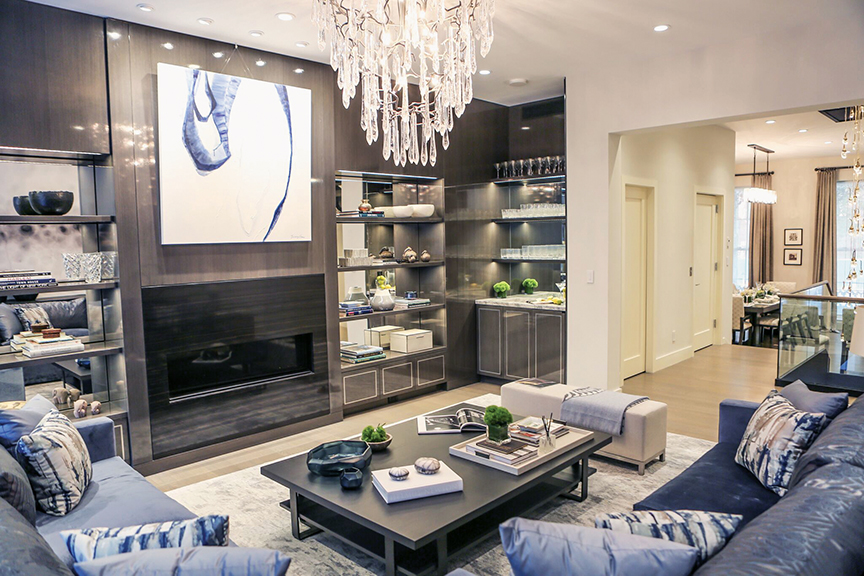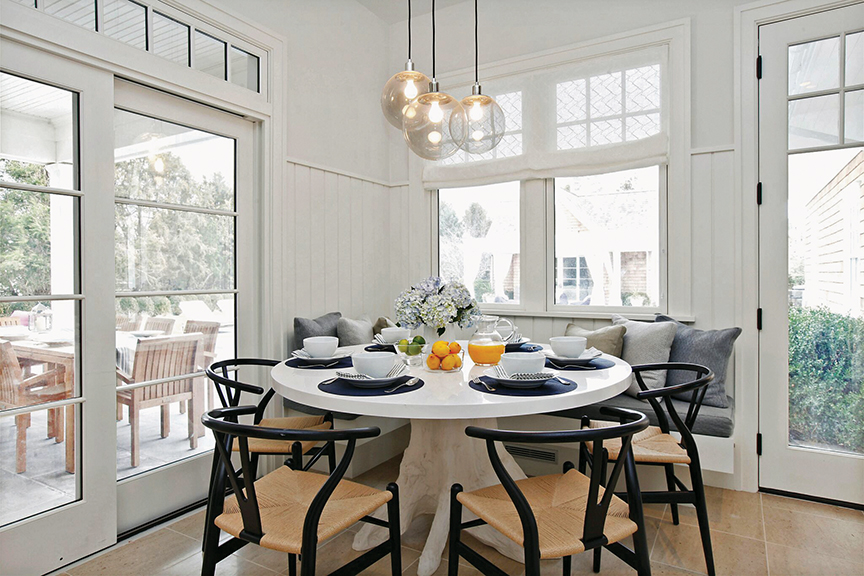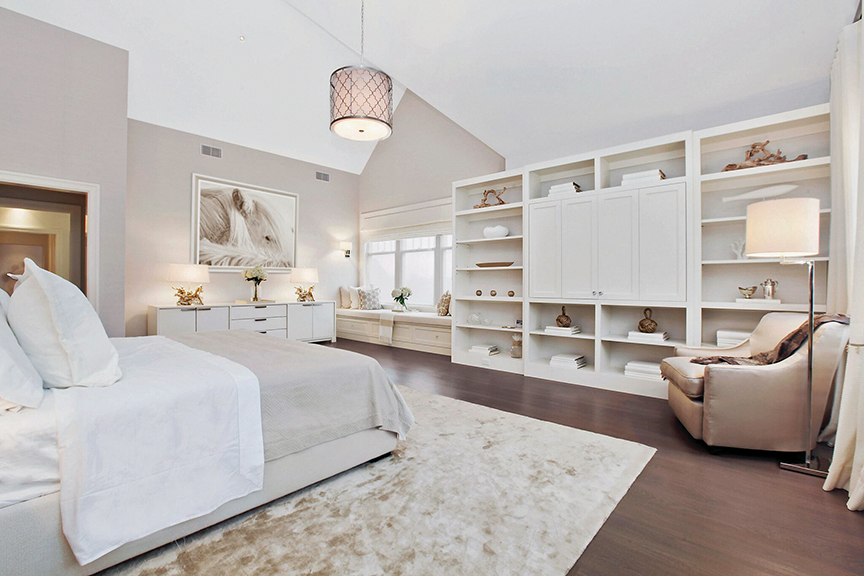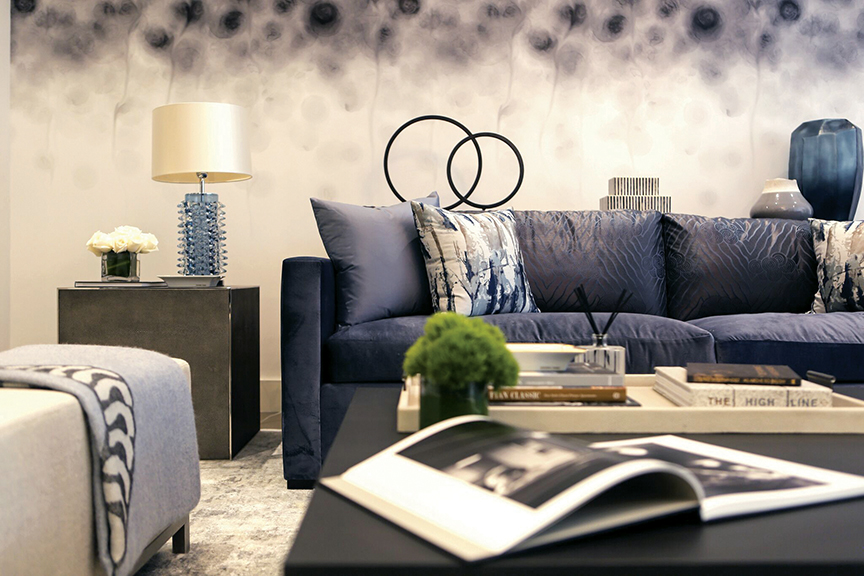Whether it’s designer fashion from Paris, colorful fabrics throughout India or architecture in The Hamptons, interior designer Birgit (“Bee”) Klein is constantly drawing inspiration from destinations across the globe. From an elegant estate on the East Coast to an old world-style apartment in Paris, Klein brings a unique perspective to the design world with Birgit Klein Interiors. The Beverly Hills, East Hampton and London-based interior design firm is driven by Klein’s European roots as well as her unwavering dedication to beautiful design.
When did you first discover your passion for interior design?
I started out working for a large corporation looking after major international corporations and managing portfolios worldwide. After many years of traveling and managing these portfolios, I was so run down. I starting helping my boyfriend at the time who was a property developer in London, and I loved it so much that I decided to give up my work and go back to the drawing board. I began to study interior design at the KLC School of Design in London. That was the best decision I’ve ever made. After studying, I started working for a few well-established interior designers. In 2005, I decided that I wanted to start my own company. As hard and daunting as it was at the beginning, I’ve never looked back.

What makes Birgit Klein Interiors and its designs stand out from other firms?
I often get hired because of my European roots, and due to the fact that my interiors are “less American.” I still have a lot of contacts in Europe — particularly in London and the U.K. to purchase furniture or antiques — and I continue to bring the European style across in my designs.

“The key to this space is the high-gloss lacquer built-ins that create a focal point. But everything is seamlessly integrated into one unit, so it doesn’t feel overpowering,” Klein explains.
How have your travels inspired your work?
During my travels, I am always so inspired — whether it’s walking through a department store, strolling through the city streets, looking at how the locals are dressed, or admiring architecture, hotels and exhibitions. I think traveling is so important for all interior designers because that is where we get a lot of inspiration.
I am inspired by design styles, materials and colors that are used in different countries. I find flower shops particularly interesting because Mother Nature has given us so many beautiful color combinations that I would not have necessarily thought about. Then, when I get projects — whether it is on the East Coast, West Coast or in Europe — I am always thinking about the things I’ve seen.
Designed to reflect a growing family, this cozy breakfast nook allows for relaxed and easy living.
What are some of your favorite regions in which to design?
I love designing homes in The Hamptons. There is just something special about the light. I also love the nature and the architecture there. I love everything about The Hamptons. I always want a reason to visit. I also really love designing homes in Montecito and London.

How do you get to know your clients, and how do you ensure they are represented in your designs?
It really depends on the client, and how well they know their style. If I have a client that knows what they want, I usually ask about inspirational images and I have a conversation with them to get a better understanding of what they like about these images. I try to understand how they would live in the home as a family. If I have a client that does not really know what they like, it is a bit more challenging. In these cases, I sometimes feel like a detective…. We will spend weeks gathering inspirational images and see where it takes us.
I want my client’s personality to be visible in the space, but, at the same time, I try to push them to be open to new ideas. It is really important that you have a client that gives you direction, but allows you to take it somewhere.


“The key to this space is the high-gloss lacquer built-ins that create a focal point. But everything is seamlessly integrated into one unit, so it doesn’t feel overpowering,” Klein explains.
You follow three key design principles — ensuring that spaces flow well together, considering the home’s geographic location, and creating timeless interiors — can you talk more about this?
When talking about flow, I always look at the house as a whole. The rooms need to flow and there needs to be a common theme throughout the house, especially as open-plan living has become so popular in recent years.When talking about flow, I always look at the house as a whole. The rooms need to flow and there needs to be a common theme throughout the house, especially as open-plan living has become so popular in recent years.
A home’s geographic location also makes a big difference in how we design it. A house that is located next to the ocean is going to be designed very different than an apartment in Paris or a townhome in New York City. You have to think about the privacy, lights, colors and what the house will be used for.
Creating timeless interiors is probably the most important out of the three principles. I have many clients who tell me how much they still love our designs eight or 10 years later. I like designing homes that feel comfortable, but elegant and luxurious at the same time. There is nothing worse to me than not being able to sit on a piece of furniture, or for the home to feel like a museum. It is really important that the spaces we design feel good to live in.
Photos courtesy of Brigit Klein Interiors.


Leave a Reply